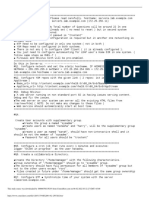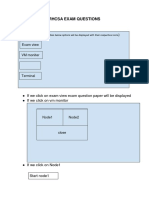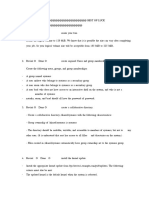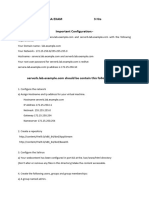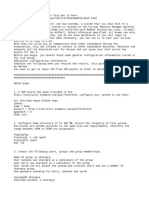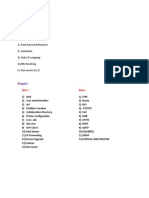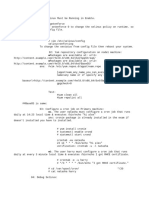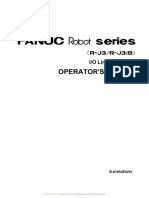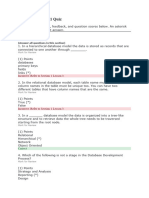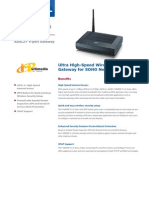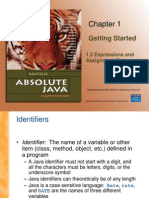0% found this document useful (0 votes)
92 views3 pagesRHEL8 Server Configuration Guide
This document contains 20 questions related to configuring a Red Hat Enterprise Linux 8 server. It includes tasks like configuring networking, YUM repositories, SELinux, user accounts, cron jobs, directories, NTP, file permissions, backups, partitions, logical volumes, VDO, containers and more. The full list of configuration steps would take several sentences to describe fully.
Uploaded by
Ahmed AyadCopyright
© © All Rights Reserved
We take content rights seriously. If you suspect this is your content, claim it here.
Available Formats
Download as PDF, TXT or read online on Scribd
0% found this document useful (0 votes)
92 views3 pagesRHEL8 Server Configuration Guide
This document contains 20 questions related to configuring a Red Hat Enterprise Linux 8 server. It includes tasks like configuring networking, YUM repositories, SELinux, user accounts, cron jobs, directories, NTP, file permissions, backups, partitions, logical volumes, VDO, containers and more. The full list of configuration steps would take several sentences to describe fully.
Uploaded by
Ahmed AyadCopyright
© © All Rights Reserved
We take content rights seriously. If you suspect this is your content, claim it here.
Available Formats
Download as PDF, TXT or read online on Scribd
/ 3





